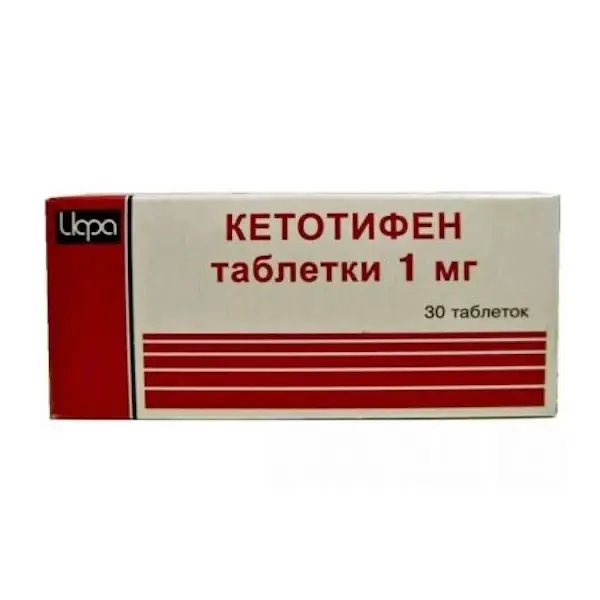Description
Suprilamin Pharmacodynamics
Chloropyramine, a chlorinated analog of tripelenamine (pyribenzamine), is a first-generation antihistamine drug belonging to the group of ethylenediamine antihistamines.
A blocker of H1-histamine receptors, it has antihistamine and m-cholin-blocking effects. This drug also acts on smooth muscles, capillary permeability, and the central nervous system (CNS).
When taken orally, the effect occurs as early as 15-30 minutes, the maximum effect develops within 1 hour and lasts about 3-6 hours.
Indications
Urticaria, serum sickness, seasonal and year-round allergic rhinitis, allergic conjunctivitis, contact dermatitis, skin itching, acute and chronic eczema, atopic dermatitis, food and drug allergies, allergic reactions to insect bites.
Contraindications
Hypersensitivity to chloropyramine and other ingredients of the drug, acute attack of bronchial asthma, lactose intolerance, lactase deficiency or glucose-galactose malabsorption, pregnancy, lactation, children under 3 years (for this dosage form).
Caution
Closed-angle glaucoma, urinary retention, prostatic hyperplasia, hepatic and/or renal dysfunction, cardiovascular disease, elderly patients.
Administration during pregnancy and lactation
Pregnancy
There have been no adequately controlled clinical studies of the use of antihistamines in pregnant women. However, cases of retrolental fibroplasia have been described in neonates whose mothers took antihistamines in the last months of pregnancy. Accordingly, the use of chloropyramine during pregnancy is contraindicated.
Breastfeeding
The use of chloropyramine is contraindicated during breastfeeding.
If it is necessary to use the drug during lactation, stop breast-feeding.
Dosage and administration
- The tablets are taken orally with meals, without chewing and with plenty of water.
- Adults: 1 tablet 3-4 times a day (75-100 mg per day).
- For children:
- 3 to 6 years of age: 1/2 tablet (12.5 mg) 2 times daily; daily dose is 25 mg;
- Ages 6 to 14 years: 1/2 tablet (12.5 mg) 2 to 3 times a day; daily dose is 25 to 37.5 mg;
- Ages 14 to 18 years: 1 tablet (25 mg) 3 to 4 times a day, the daily dose is 75 to 100 mg.
- The dose may be gradually increased in children in the absence of side effects in the patient, but the maximum dose should never exceed 2 mg/kg body weight.
- The duration of treatment depends on the nature, symptoms, degree of their manifestation, duration and course of the disease.
- Special patient groups
- Elderly patients and patients with severe underweight
- The use of chloropyramine requires special caution because antihistamines are more likely to cause side effects (dizziness, drowsiness, drop in blood pressure (BP)) in these patients.
- Patients with impaired liver function
- Dose reduction may be required due to decreased metabolism of chloropyramine in liver disease.
- Patients with impaired renal function
- Changes to the drug regimen and dose reduction may be required due to the fact that chloropyramine is mainly excreted by the kidneys.





